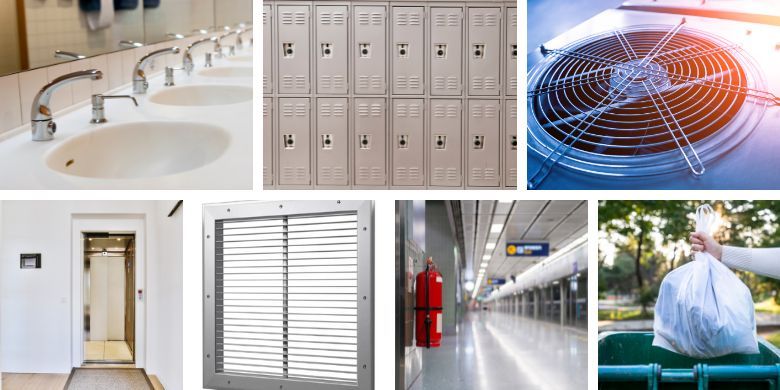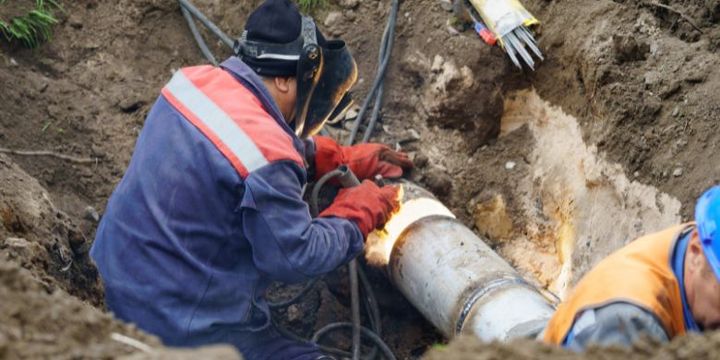Welcome to our comprehensive guide on Construction Specifications Institute (CSI) Division 10 – Specialties! Whether you’re new to the world of CSI or a seasoned professional, this guide will help you better understand the ins and outs of Division 10, and how to write and optimize your specifications with accuracy, efficiency, and search engine optimization in mind.
Suggested Posts:
Introduction to CSI MasterFormat and Division 01
Getting to Grips with CSI Division 02 – Existing Conditions in Construction Projects
Mastering Division 09 – Finishes in the CSI MasterFormat System for Improved Project Success
Understanding CSI MasterFormat: Division 14- Conveying Equipment
Master the Art of Utilities Construction with CSI Division 33
Division 48 – A Comprehensive Guide to Electrical Power Generation in Construction
Why Division 10 – Specialties Matters
As the construction industry evolves and the need for specialized materials and products continues to grow, it’s crucial to maintain a high level of standardization across projects. CSI Division 10 – Specialties plays a vital role in ensuring consistency and coordination between project teams, allowing for streamlined communication and planning processes.
By adhering to a standardized framework like CSI Division 10, architects, engineers, and contractors can work in harmony, reducing the risk of miscommunication, errors, and redundancies throughout the construction process.
Introduction to CSI Division 10 – Specialties
The Construction Specifications Institute (CSI) plays a vital role in the construction industry by establishing and maintaining standardized construction specifications, which are essential in ensuring consistency and quality across various projects. One of the key divisions within these specifications is CSI Division 10 – Specialties. This division focuses on a wide range of specialized products and materials used in construction projects and provides a framework for their proper implementation. In this blog post, we will delve into the importance of Division 10, the role of the CSI, and the various sections that make up this crucial division in the world of construction.
What is CSI Division 10?
CSI Division 10 – Specialties comprises several categories that address the unique products and materials used in specific construction applications. These specialties enhance the functionality, aesthetics, and safety of a construction project, and can vary greatly from one project to another. Examples of these specialties include visual display surfaces, toilet partitions, and lockers, among others. By creating a standard classification system for these items, the CSI ensures that industry professionals can easily communicate and collaborate on their implementation.
The Role of the Construction Specifications Institute
The Construction Specifications Institute (CSI) is responsible for creating and maintaining the MasterFormat, a comprehensive classification system for organizing construction information. This system helps streamline the construction process by providing a common language for contractors, architects, engineers, and other industry professionals. By adhering to the CSI’s standardized specifications, construction stakeholders can minimize miscommunications and improve overall project efficiency.
The Significance of Standardized Construction Specifications
Standardized construction specifications are essential for ensuring the quality, consistency, and compliance of construction projects. They provide a uniform set of guidelines that help industry professionals understand the requirements and expectations for each project phase, from planning and design to execution and maintenance. By adhering to these specifications, construction stakeholders can mitigate risks, streamline decision-making, and achieve the desired project outcomes.
Breaking Down the Subcategories of Division 10
In this section, we will dive deep into the different subcategories of Division 10, discussing their purpose and application in various projects. By understanding these subcategories, professionals in the construction industry can effectively utilize these specialties and ensure compliance with the Construction Specifications Institute (CSI) standards.
Major Subcategories of Division 10 – Specialties
Division 10 consists of several subcategories, each focusing on specific products or materials used in construction projects. Some of the major subcategories include:
- Visual Display Surfaces
- Toilet, Bath, and Laundry Accessories
- Grilles, Louvers, and Vents
- Wall and Door Protection
- Lockers and Storage Equipment
- Fire Protection Specialties
- Floor Mats and Frames
- Waste Receptacles and Bollards
Applications and Project Types for Each Subcategory
Each subcategory of Division 10 specializes in certain applications and fits specific project types. For example:
- Visual Display Surfaces are applicable in educational, commercial, and office buildings where information is frequently shared and displayed.
- Toilet, Bath, and Laundry Accessories cater to public restrooms, health facilities, and hospitality projects.
- Grilles, Louvers, and Vents are essential in industrial, commercial, and residential buildings to provide air circulation and ventilation.
- Wall and Door Protection products are widely used in high-traffic areas, such as hospitals, schools, and commercial spaces.
- Lockers and Storage Equipment fit well in sports facilities, educational institutions, and public transportation facilities.
- Fire Protection Specialties are necessary for buildings with high fire risk, such as warehouses and manufacturing facilities.
- Floor Mats and Frames are commonly used in commercial and residential entryways to prevent dirt and moisture from being tracked inside.
- Waste Receptacles and Bollards are prevalent in parks, streetscapes, and commercial properties to maintain cleanliness and provide security.
Examples of Specialized Products and Materials
Understanding the specialized products and materials within each subcategory is crucial for the effective implementation of Division 10 standards. For instance:
- Visual Display Surfaces include whiteboards, tack boards, and bulletin boards.
- Toilet, Bath, and Laundry Accessories cover grab bars, soap dispensers, towel racks, and toilet paper holders.
- Grilles, Louvers, and Vents consist of air diffusers, return grilles, and exhaust fans.
- Wall and Door Protection materials encompass corner guards, handrails, and impact-resistant wall covering.
- Lockers and Storage Equipment comprise metal and plastic lockers, cubbies, and bike racks.
- Fire Protection Specialties consist of fire extinguishers, cabinets, and accessories such as signs and labels.
- Floor Mats and Frames include entrance mats, recessed mats, and anti-fatigue flooring.
- Waste Receptacles and Bollards involve trash cans, recycling bins, and decorative bollards for security and aesthetics.
Common Industry Practices for Implementing Division 10 Standards
To ensure compliance with Division 10 standards, construction professionals must first identify the necessary subcategories required for a specific project type. By collaborating with construction specification experts and closely following CSI guidelines, professionals can effectively implement these specialties and adhere to industry best practices.
By understanding the subcategories of Division 10 – Specialties, construction professionals can successfully employ these products and materials in their projects. Leveraging this knowledge allows for improved project planning, execution, and adherence to CSI standards, ultimately leading to more efficient and compliant construction processes.
Best Practices for Writing and Optimizing Division 10
In this competitive construction industry, having clear and concise Division 10 – Specialties specifications is crucial. Well-constructed specifications guide contractors, designers, and project managers in the process of selecting and installing specialized products and materials.
The Importance of Readability and Clarity
Effective construction specifications communicate vital information to all involved parties in a project, ensuring the accurate implementation of Division 10 – Specialties. When specifications are not clear or easily understood, this can lead to misinterpretations, rework, increased costs, and project delays. Therefore, always strive for readability and clarity when creating your specifications.
Best Practices for Writing Division 10 – Specialties Specifications
- Research Thoroughly: Understand the specific requirements for each Specialty category. Be familiar with the latest industry standards, codes, and regulations that apply to your project.
- Use Consistent Terminology: Employ standardized terminology and consistent naming conventions for products, materials, and systems throughout the entire document.
- Include Comprehensive Information: Provide all necessary details, including performance criteria, installation requirements, and inspection procedures. Ensure specifications are complete and do not leave room for ambiguity.
- Organize Logically: Arrange the content in a logical sequence, starting from general requirements and progressing to more specific details. Use headings, subheadings, and bullet points to make the document easily navigable.
- Use Simple Language: Write in a clear, concise manner using plain language. Avoid using overly technical jargon that may not be understood by all parties involved in the project.
Step-by-Step Guide to Incorporating Division 10 in a Project Plan
Incorporating Division 10 – Specialties into your construction project plan can help ensure your work complies with industry standards while also providing a seamless experience for all stakeholders. To help you get started, here’s a step-by-step guide to effectively integrate these standards into your project:
Step 1: Identifying the Project’s Division 10 – Specialties Requirements
The first step is to identify any Division 10 – Specialties that are applicable to your project. This includes everything from toilet partitions and washroom accessories to signage and wall protection. Also, make sure to review the project’s scope and design documents to determine if any additional specialties are required.
Step 2: Working with Construction Specification Experts
To ensure that your project remains compliant with Division 10 standards, it’s important to collaborate with a construction specification expert. These professionals have extensive knowledge of the various Division 10 subcategories and can help you create accurate and optimized specifications for your project.
Step 3: Key Considerations When Incorporating Division 10 Standards
There are several key factors to consider when incorporating Division 10 standards into your project plan:
- Design Compatibility: Make sure that the Division 10 specialties you select are compatible with your project’s overall design and aesthetic.
- Budget Constraints: Consider the cost of implementing these standards and make any necessary adjustments to ensure your project remains within budget.
- Regulatory Compliance: Check that your selected Division 10 specialties meet any applicable building codes and regulations, including those related to accessibility and fire safety.
- Sustainability: Select environmentally friendly products and materials whenever possible to support a green construction project.
Step 4: A Step-by-Step Guide for Integrating Division 10 Standards Effectively
To successfully integrate Division 10 – Specialties into your project plan, follow these steps:
- Compile a comprehensive list of all required Division 10 specialties based on your project’s design documents and scope.
- Consult with a construction specification expert to review your selections and ensure they comply with relevant standards.
- Incorporate your finalized Division 10 product selections into your project’s drawings, specifications, and other documentation.
- Communicate your Division 10 requirements to your project team, including subcontractors and suppliers, to ensure that everyone is aware of the necessary standards and materials.
- Monitor the progress of your project to confirm that all Division 10 – Specialties are being properly implemented and that any issues are quickly resolved.
Following these steps will help you effectively incorporate Division 10 standards into your construction project, ensuring a successful outcome that meets industry standards and satisfies all stakeholders.
Conclusion
Incorporating Division 10 – Specialties standards into your construction project plan is crucial for creating a cohesive, functional, and compliant final product. By partnering with construction specification experts and following the step-by-step guide provided, you can ensure that your project incorporates the necessary standards for successful completion.
Keep in mind the importance of staying informed on construction specification updates and changes, as well as embracing advancements in technology, materials, and processes that could impact Division 10 standards in the future. By doing so, you’ll remain at the forefront of this ever-evolving industry, delivering high-quality projects that stand the test of time.
Leveraging Technology for Efficient Division 10 Specification Management
The construction industry is continually evolving, and with it, so are the tools available to ensure a smooth and efficient process. In this section, we will explore the role of technology in managing construction specifications, along with top solutions for Division 10 – Specialties specification management. We will also discuss the benefits of leveraging technology for construction project planning and execution, along with case studies showcasing successful technology adoption in Division 10 projects.
The Role of Technology in Managing Construction Specifications
Technological advancements have significantly impacted the management of construction specifications, including Division 10 – Specialties. Software solutions, platforms, and mobile applications offer streamlined methods for organizing and managing project data, ensuring compliance with industry standards, tracking revisions, and improving overall project efficiency. Moreover, digital tools have made it easier than ever before to collaborate in real-time and share crucial project information with all stakeholders involved, including architects, contractors, and construction specification experts.
Top Software Solutions for Efficient Division 10 – Specialties Specification Management
Several software solutions are specifically designed for efficient Division 10 – Specialties specification management. These tools offer comprehensive features and functionalities to optimize the process:
- Procore: Procore is a cloud-based construction management software that centralizes project information, streamlines communication, and promotes seamless collaboration between team members.
- PlanGrid: PlanGrid is a mobile construction blueprint app that allows users to manage, markup, and share their construction drawings and documents in real-time.
- E-SPECS: E-SPECS is a specification management software specifically designed for architects, engineers, and construction professionals, offering an integrated approach to streamlining the process of creating, editing, and managing specifications, including Division 10 – Specialties.
- Bluebeam Revu: Bluebeam Revu is a PDF markup and collaboration tool designed for the AEC industry. It allows users to efficiently create and manage project documents, track revisions, and collaborate with team members in real-time.
Benefits of Leveraging Technology for Construction Project Planning and Execution
Adopting technology for managing Division 10 – Specialties construction specifications offers numerous benefits:
- Improved efficiency: Digital tools automate manual tasks, reduce errors, and streamline workflows, resulting in substantial time and cost savings.
- Enhanced collaboration: Real-time communication and information sharing enable all project stakeholders to work together more effectively and make better-informed decisions.
- Increased compliance: Software solutions ensure that construction specifications adhere to industry standards, minimizing the risk of costly errors and delays.
- Simplified document management: Digital document storage and organization make it easy to track revisions, locate project files, and ensure all team members operate on the latest information.
In conclusion, leveraging technology for Division 10 – Specialties specification management not only optimizes the construction process but also ensures compliance and enhances collaboration. As digital tools continue to advance and improve, the future of construction specifications management will undoubtedly become even more efficient and streamlined.
Have Questions?
Get in touch with our team to learn more about what Swiftlane can do for you.









